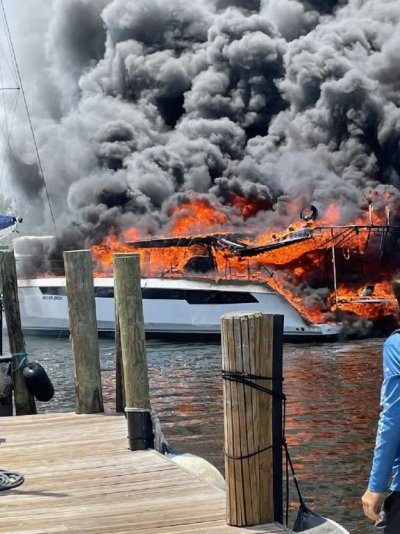twistedtree
Guru
You make some valid points. Some I agree with.
But as expressed above if you choose to carry insurance then they want an inspection for ABYC compliance. Such as steel bowls under fuel filters, 10ft rule and other issues. Even if the issue was recommended in 2015, they want your 1988 trawler to meet those same 2015 standards.
Want to stay at a marina, many require insurance. Don't blame them at all. Unfortunately many boaters are no longer carrying insurance as it has been priced beyond thier means, so they go without. Not me. I carry insurance, but the cost is getting to hurt and I don't see any end in sight. Boat survey, add issues that the inspector finds according to the up to date ABYC standards makes it even harder to meet
Yet as some here have expressed there is no requirement to follow ABYC recommendations. True until you turn the page and see the truth. I believe ABYC serves a purpose. But I would disagree with you that's it not required. It is required if you want to carry insurance, lease a slip, etc.
Didn't realize this was such a sensitive issue. There are those that are pro ABYC and those who are anti ABYC. I guess never to meet in the middle.
Hope everyone is having a great weekend and our prayers to those in Florida.
It's only contentious when you misconstrue reality.
You have said in so many words that there is collusion between ABYC and Insurance companies. There is not. I have participated in the writing of ABYC standards, and the updating of ABYC standards, and there has never been anyone from an insurance company in the room or on the phone during the process. And nobody in some back room edits or changes text and hands it back to us. In fact, the debate always looks out for people in your situation. There is frequent discussion about the possible impact of new requirements on existing boats, and what hardships it might create.
You have also said in so many words that insurance companies require ABYC compliance to insure. That's not true. They require that your boat satisfies and inspector, and that inspector is in turn looking for significant safety issues. To be considered safe, certain aspects of your boat need to meet current standards, but not everything, not even close. In the US, ABYC is most common standard, but CE or CSA or other could be used too. Shore power is one of the highest ranking causes of boat damage, so they want that to be up to current standards. DC power systems are also a common cause of fires on a boat, so looking for gross violations makes sense. But I guarantee they are not asking you to meet full current specifications - only select items. Fires kill people, cause total losses of boats, and very possibly a bunch of other boats. So doesn't it make sense to have a $50 fire shield to buy you time before a fire ignites your fuel supply?
Insurance companies don't know anything about boats. What they do know about are statistics, so they look at boat claim statistics and decide which types of boats they want to insure, and what things they require to mitigate their risk. If insurance required strict ABYC compliance, I venture that there isn't a single boat on the water that would be insured today.
You do bring up a valid predicament for owners of older boats when it comes to getting insurance. You likely have to make some updates to insure and keep using that boat, and I'm sure it's frustrating and annoying. I know I get annoyed when my home insurance company wants me to add hand railings, and wants to know how close I am to a fire hydrant in a rural community where there is no public water supply, let along fire hydrants. But my wife was just at an AirBnB where there were no railings on a set of stairs, and she lost her balance and fell, seriously injuring her back. I wish their building inspection had flagged that deficiency and that their insurance had require it be fixed.
This is only contentious when you cast it as a conspiracy and a requirement for old boats to meet all new standards.

